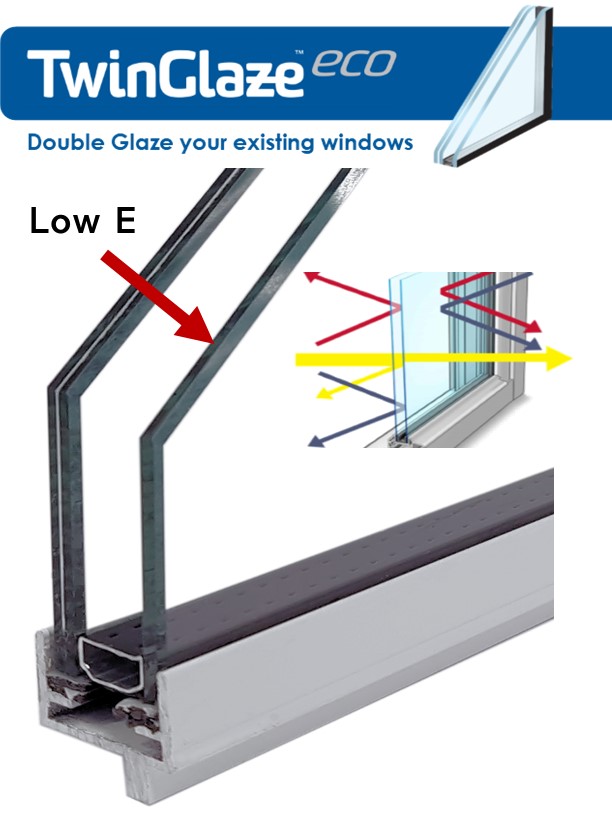All Categories
Featured
Table of Contents
Why Does Double Glazing Help To Keep Us Cool In Summer? in South Guildford Western Australia
That window can transmit more solar heat in winter season than in summer. A west-facing window on a summertime's afternoon has an angle of incidence from near 0 approximately 30 with a large effective area of solar radiation. A north-facing window, in summertime, has a high angle of incidence and a low reliable location of solar radiation, so can transmit less heat than a west-facing one.

However you can quickly and easily enhance the thermal performance of your home by replacing your windows. This is one of the most efficient methods of renovation to achieve enhanced thermal comfort. There are thousands of kinds of glass and frames to select from. Picking the right ones is essential to enhancing the energy effectiveness of your house.
Double Glazed Windows & Doors Melbourne & Sydney in St James Western Australia
There are various kinds of glass items to select from. Single glazing utilizes a single pane of glass. Single glazing with clear glass is not extremely efficient when it pertains to heat loss or gain. To improve performance, you can use single glazing with a more energy-efficient kind of glass such as low emissivity (low-e) glass.
Multiple layers can be assembled with sealed cavities in between each sheet of glass. IGUs typically offer better energy efficiency than single glazing, since they transmit less energy. Nevertheless, the energy efficiency of IGUs also depends on: the residential or commercial properties of each layer of glass. Different glass types (for instance, clear and low-e glass) can be put together in an IGU.
Double Glazed Windows Melbourne - Upvc - German ... in Shenton Park Perth

IGU cavities can be filled with air or a more inert, low-conductivity gas such as argon the width of the cavity. Cavity density is typically 6 to 18mm. Broader cavities provide lower (much better) U worths, with 12mm usually accepted as the preferred space how well the cavity is sealed. Cavities need to be dry and well sealed to avoid moisture getting in.
If argon is installed to the cavity in location of air, moisture is dependably left out the level of desiccant (drying agent). The spacer (metal or polymer strip) that separates the glass layers contains a desiccant to take in any wetness. Inadequate desiccant might trigger moisture to condense on the glass surface in cold conditions, minimizing thermal efficiency.
Brisbane's Best Double Glazed Windows in Mahogany Creek Western Australia
In truth, IGUs can provide much better energy efficiency for all climates, especially in heated and air-conditioned homes. Cross-section information of single, double and triple-glazing systems Low emissivity glass (typically called low-e glass) reduces heat transfer. Low-e glass may be either high or low transmission: High transmission low-e glass has a covering that permits daylight from the sun to pass into the home to achieve excellent solar heat gain, however lowers the quantity of the long wavelength infrared heat that can get away back through the window.
Low-e glass has either a pyrolytic coating or a vacuum-deposited thin film metal coating. Pyrolytic finishes are long lasting and can be used for any glazing; vacuum-deposited finishings are soft and are only used within IGUs. Low-e coverings can substantially enhance both U worth and SHGC; however, they should be utilized correctly or they will either degrade or stop working to perform as needed.
Double Glazed Windows: A Complete Guide in Southern River WA
Low-e finishings can be utilized in mix with clear, toned or reflective glass. Low-e coatings on glazing can lower heat transfer where needed Photo: Department of Market, Science, Energy and Resources Toned glass has actually colouring additives included during manufacture. It is offered in various colours, usually bronze, grey, blue and green.
Table of Contents
Latest Posts
Single, Double Or Secondary Glazing, Which Is The Best ... in Leda WA
Double Glazed Windows Brisbane in Lockridge Western Australia
Double Glazing Vs. Triple Glazing: Which Is Worth It? in Palmyra Perth
More
Latest Posts
Single, Double Or Secondary Glazing, Which Is The Best ... in Leda WA
Double Glazed Windows Brisbane in Lockridge Western Australia
Double Glazing Vs. Triple Glazing: Which Is Worth It? in Palmyra Perth